
The Vibrant Heart of Bangkok: Chinatown
Explore Bangkok's Chinatown for a captivating blend of traditional Chinese culture, tantalizing street food, and vibrant nightlife, making it a must-visit destination.
Stepping into Chinatown in Bangkok is akin to entering a bustling kaleidoscope of colors, sounds, and aromas. This historical neighborhood, known locally as Yaowarat, is a thriving hub of culture and commerce. From dawn until dusk, and well into the night, the streets of Chinatown are alive with activity. Here, traditional Chinese architecture meets modernity, creating a unique tapestry that is both charming and exhilarating. One of the main attractions in Chinatown is the food. Street vendors line the roads, offering an array of mouth-watering delights such as dim sum, seafood, and the famous Thai-Chinese fusion dishes. For a more immersive culinary experience, visit one of the many hidden gem restaurants tucked away in narrow alleyways. Nighttime brings a different energy as neon signs illuminate the streets and the aroma of food fills the air, making it a haven for food enthusiasts. Beyond the culinary wonders, Chinatown is rich with cultural and historical landmarks. Temples such as Wat Traimit, which houses the world's largest solid gold Buddha, offer a glimpse into the spiritual life of the community. The bustling Sampeng Lane Market provides a sensory overload of sights and sounds, perfect for those looking to shop for souvenirs or simply soak in the local atmosphere. Additionally, don't miss the chance to explore the area's vibrant nightlife, with its eclectic mix of bars and clubs. Chinatown is not just a place to visit; it's an experience that captures the essence of Bangkok's diverse cultural landscape. Whether you're here for the food, the history, or the vibrant street life, Chinatown promises an unforgettable adventure.
Local tips in Chinatown
- Visit early in the morning to avoid crowds and enjoy a peaceful temple visit.
- Wear comfortable shoes; the streets are narrow and often crowded.
- Carry cash, as many street vendors do not accept credit cards.
- Try the street food, but make sure to choose stalls with a high turnover for the freshest dishes.
- Take a map or use a navigation app, as it’s easy to get lost in the maze of alleyways.
The Vibrant Heart of Bangkok: Chinatown
Stepping into Chinatown in Bangkok is akin to entering a bustling kaleidoscope of colors, sounds, and aromas. This historical neighborhood, known locally as Yaowarat, is a thriving hub of culture and commerce. From dawn until dusk, and well into the night, the streets of Chinatown are alive with activity. Here, traditional Chinese architecture meets modernity, creating a unique tapestry that is both charming and exhilarating. One of the main attractions in Chinatown is the food. Street vendors line the roads, offering an array of mouth-watering delights such as dim sum, seafood, and the famous Thai-Chinese fusion dishes. For a more immersive culinary experience, visit one of the many hidden gem restaurants tucked away in narrow alleyways. Nighttime brings a different energy as neon signs illuminate the streets and the aroma of food fills the air, making it a haven for food enthusiasts. Beyond the culinary wonders, Chinatown is rich with cultural and historical landmarks. Temples such as Wat Traimit, which houses the world's largest solid gold Buddha, offer a glimpse into the spiritual life of the community. The bustling Sampeng Lane Market provides a sensory overload of sights and sounds, perfect for those looking to shop for souvenirs or simply soak in the local atmosphere. Additionally, don't miss the chance to explore the area's vibrant nightlife, with its eclectic mix of bars and clubs. Chinatown is not just a place to visit; it's an experience that captures the essence of Bangkok's diverse cultural landscape. Whether you're here for the food, the history, or the vibrant street life, Chinatown promises an unforgettable adventure.
Iconic landmarks you can’t miss
Wat Traimit Withayaram Worawihan (Golden Buddha)
Discover the awe-inspiring Golden Buddha at Wat Traimit, a stunning Buddhist temple in the heart of Bangkok, blending spirituality and history.
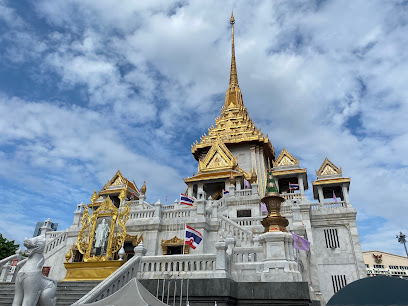
Wat Mangkon Kamalawat (Wat Leng Noei Yi)
Experience the rich cultural heritage and serene ambiance of Wat Mangkon Kamalawat, a must-visit Buddhist temple in Bangkok's vibrant Chinatown.

China Town
Experience the rich culture and vibrant flavors of Chinatown, Bangkok, where tradition meets culinary delight in every corner.
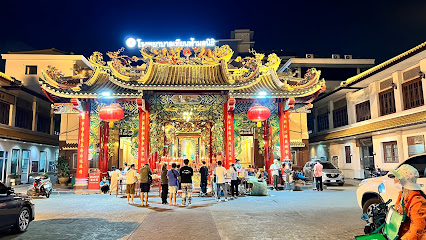
The Chinatown Gate
Explore Bangkok's Chinatown Gate, a historical landmark that opens the door to a vibrant cultural experience filled with food, shopping, and rich traditions.
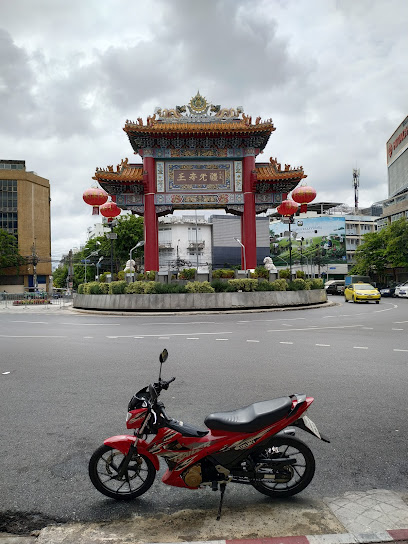
Ong Ang Canal
Experience the charm of Ong Ang Canal in Bangkok, a serene escape filled with rich culture, delightful street food, and stunning views.

Yaowarat Chinatown Heritage Center
Explore the vibrant history of Bangkok's Chinatown at the Yaowarat Chinatown Heritage Center, where culture and tradition come alive.
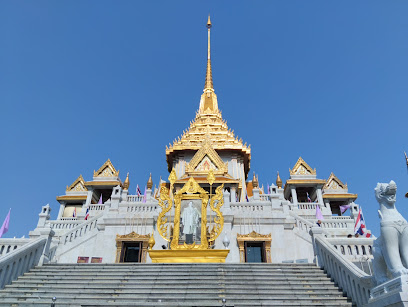
เลื่อนฤทธิ์ เยาวราช The Luenrit Old Town, Yaowarat
Discover the vibrant blend of history and modernity at The Luenrit Old Town in Yaowarat, Bangkok—an unforgettable culinary and cultural experience.
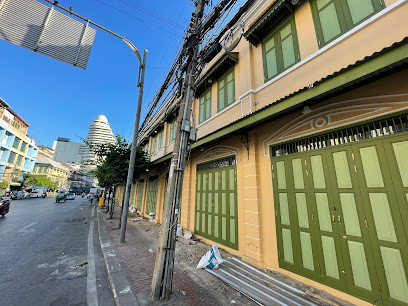
Chinese Lantern Alley
Discover the enchanting beauty of Chinese Lantern Alley in Bangkok, where vibrant lights and culinary delights create an unforgettable evening experience.
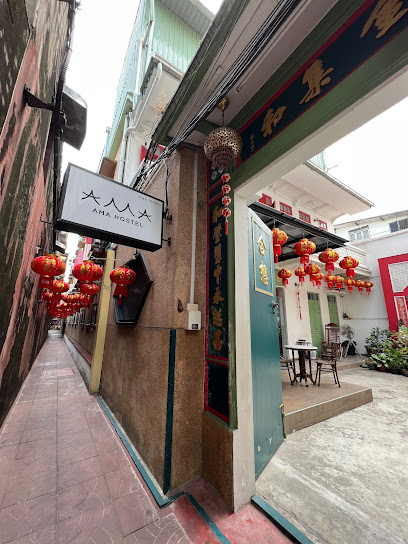
ตึกแขก ทรงวาด
Discover the captivating historical landmark in Bangkok, a beautiful blend of culture, history, and vibrant city life.
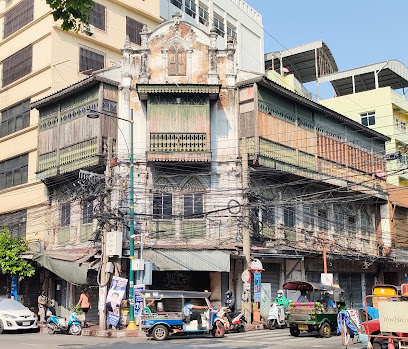
ตึกดอกไม้ (อาคารโบราณถนนทรงวาด)
Explore the enchanting Wat Phra Chetuphon, home to the Reclining Buddha and a hub of Thai culture and spirituality.
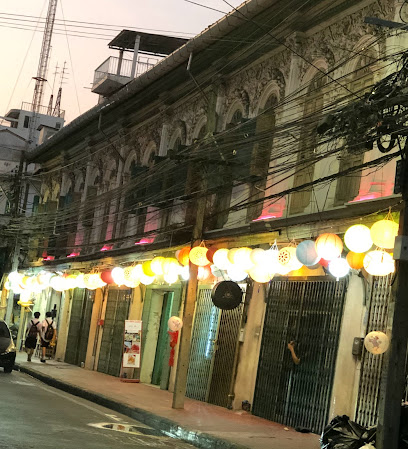
Unmissable attractions to see
The Grand Palace
Explore the grandeur of The Grand Palace, a historical and cultural landmark in Bangkok, showcasing Thailand's royal heritage and stunning architecture.
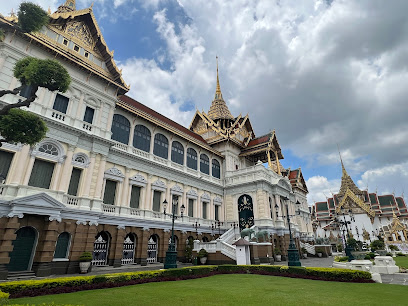
Wat Mangkon Kamalawat (Wat Leng Noei Yi)
Explore the spiritual heart of Bangkok at Wat Mangkon Kamalawat, a stunning Buddhist temple rich in history and cultural significance.
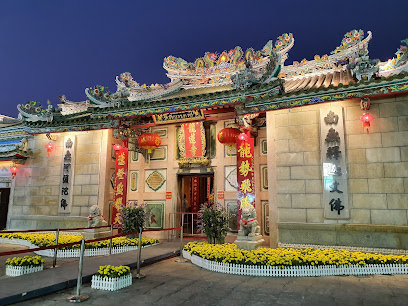
China Town
Explore the vibrant streets of Chinatown in Bangkok, where rich culture, delicious cuisine, and fascinating history converge in a sensory delight.
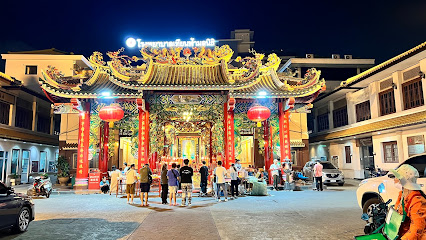
The Chinatown Gate
Discover the vibrant culture and rich history at the iconic Chinatown Gate in Bangkok, a must-see destination for every traveler.
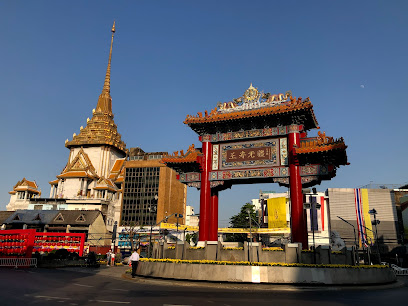
Yaowarat Chinatown Heritage Center
Explore the Yaowarat Chinatown Heritage Center, a cultural gem in Bangkok showcasing the vibrant history and traditions of the Chinese community.
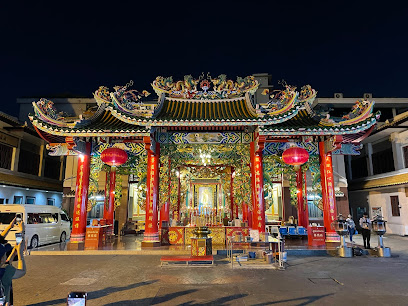
Liverpool Mural
Explore the stunning Liverpool Mural in Talat Noi, Bangkok - a vibrant intersection of art, culture, and local heritage.
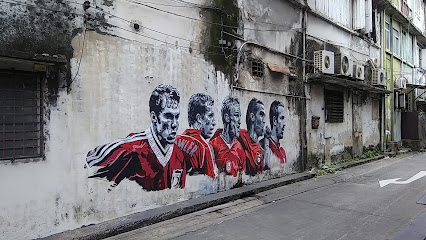
Chinese Lantern Alley
Explore the enchanting Chinese Lantern Alley in Bangkok, a vibrant hub of culture, cuisine, and captivating visuals perfect for every traveler.
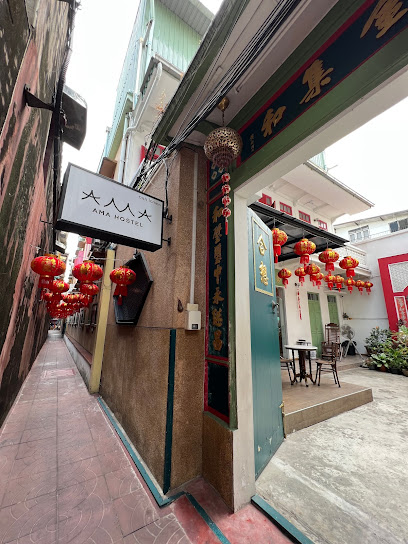
Elsa and Ana picture
Explore the whimsical world of Elsa and Ana Picture in Bangkok, where magic meets creativity for unforgettable family memories.

Fish Feeding Stall
Discover the joy of feeding colorful fish at the Fish Feeding Stall in Bangkok, a delightful family-friendly attraction nestled in the heart of the city.
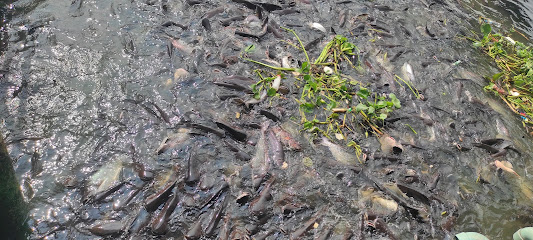
ตึกดอกไม้ (อาคารโบราณถนนทรงวาด)
Explore the serenity and splendor of Wat Pho, home to the magnificent Reclining Buddha and a hub of Thai culture and traditional healing.
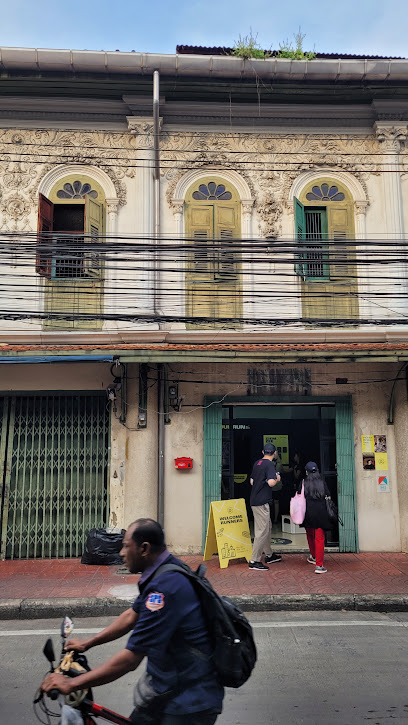
Essential places to dine
laoteng 楼顶
Discover authentic Chinese cuisine at laoteng 楼顶 in Bangkok – where every bite takes you on a flavorful journey through tradition.
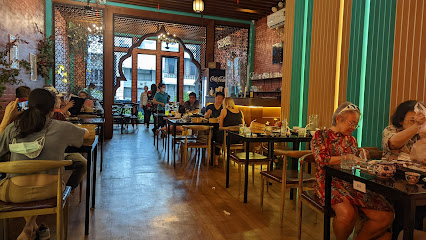
Chinatown Scala Restaurant
Experience authentic Chinese cuisine at Chinatown Scala Restaurant in Bangkok's vibrant Chinatown - a culinary delight awaits!
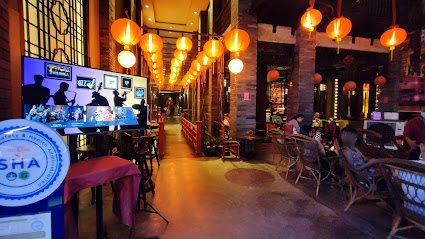
HAGOW Yaowarat
Experience authentic Chinese cuisine in Bangkok's bustling Yaowarat district at HAGOW Yaowarat, where every dish tells a story.
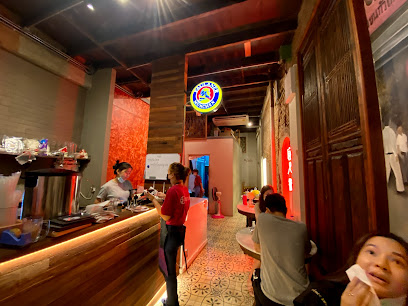
Lek Seafood
Dive into deliciousness at Lek Seafood in Bangkok – where fresh catches meet traditional Thai flavors for an unforgettable dining experience.
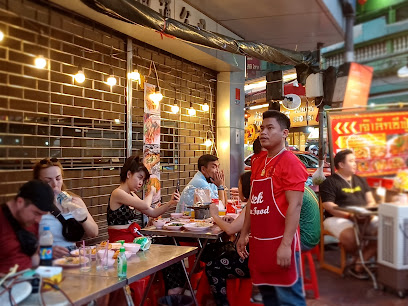
Red Rose
Discover the perfect blend of Asian cuisine and live jazz at Red Rose in Bangkok's vibrant Chinatown.

Shangarila Restaurant
Experience authentic Chinese cuisine at Shangarila Restaurant in Bangkok's vibrant Chinatown – a culinary gem not to be missed!
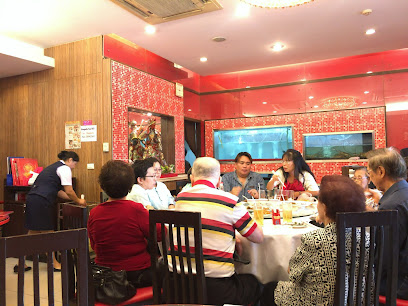
HOR FUN
Experience authentic Thai flavors at HOR FUN in Samphanthawong – a culinary gem in the heart of Bangkok.
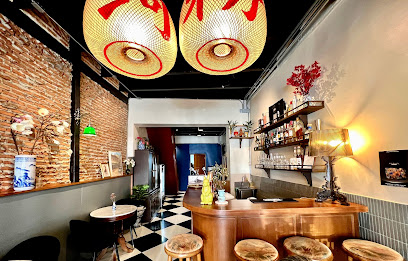
เซี้ยไชน่าทาวน์ 謝, xie chinatown
Discover authentic Chinese cuisine at Xie Chinatown on Yaowarat Road in Bangkok – where every dish tells a story!
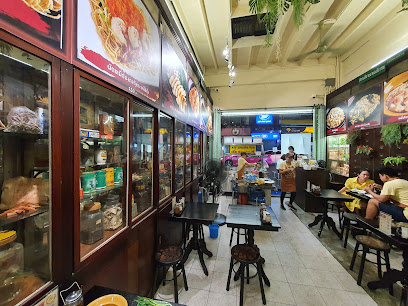
Nam Sing
Experience authentic Thai and Chinese cuisine at Nam Sing in Bangkok's vibrant Chinatown—where flavor meets tradition.
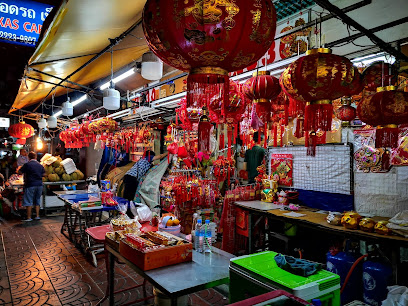
Tai Heng
Discover the rich flavors of authentic Chinese cuisine at Tai Heng in Samphanthawong, Bangkok – a culinary experience you won't forget.
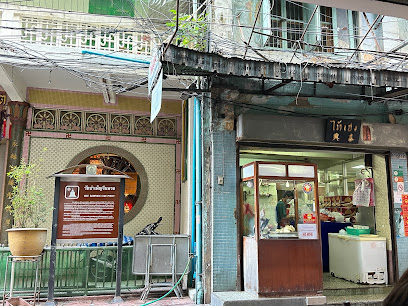
Markets, malls and hidden boutiques
RR Gift Shop
Explore the charm of Thailand at RR Gift Shop, where unique souvenirs and local crafts come together to create lasting memories.
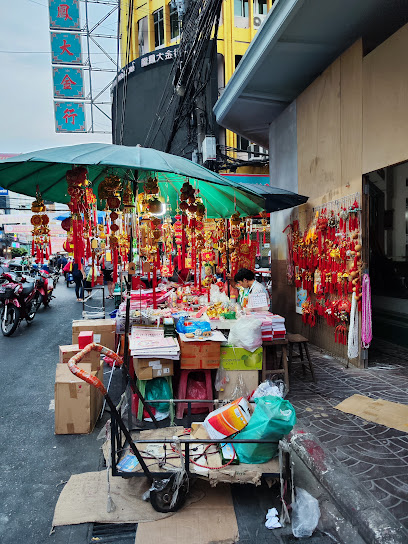
PST THAI SOUVENIR SHOP
Explore the essence of Thai culture at PST Thai Souvenir Shop, where unique handcrafted souvenirs await every traveler.
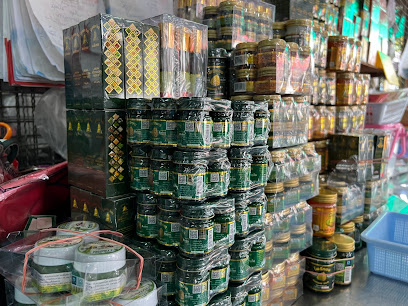
Unique Merchandise
Discover Unique Merchandise in Bangkok: Your Destination for Authentic Gifts and Antiques Reflecting Thai Culture.
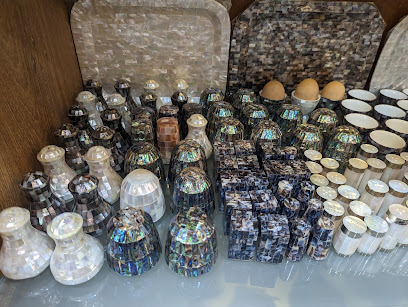
Shopping market
Explore Bangkok's vibrant shopping market, a unique blend of local culture, delicious street food, and exciting shopping opportunities.
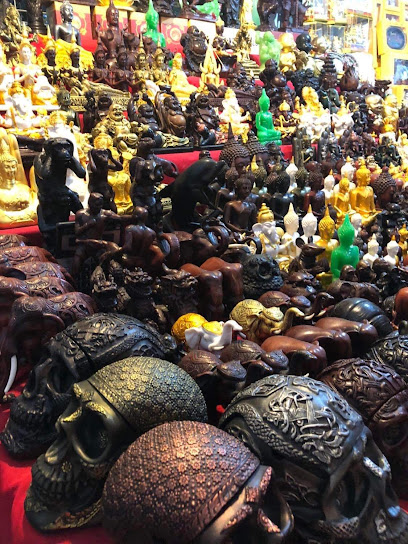
Lucky Toys Shop
Explore the enchanting Lucky Toys Shop in Bangkok for unique gifts and toys that embody Thai culture and creativity.
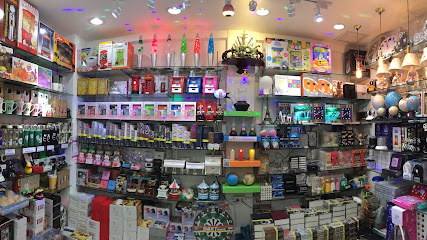
林真香
Explore the unique treasures and cultural craftsmanship at Lin Zhen Xiang Gift Shop in Bangkok's vibrant Chakkrawat district.
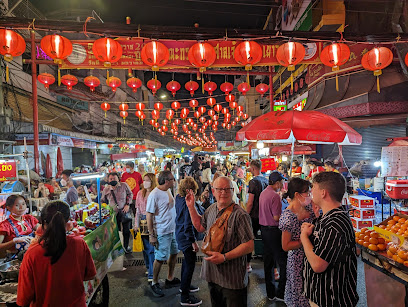
ร้านพี่โอ๋
Explore the vibrant gift shop ร้านพี่โอ๋ in Bangkok for unique souvenirs and local handicrafts that embody Thai culture.
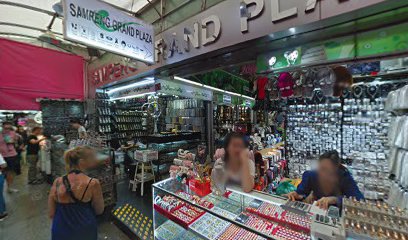
โชย เส็ก เตี่ยม
Discover unique Thai gifts and local crafts at โชย เส็ก เตี่ยม, the perfect stop for tourists seeking authentic souvenirs in Bangkok.

BoyBoy Shop
Explore BoyBoy Shop in Bangkok for unique gifts and authentic Thai souvenirs that capture the essence of Thailand's rich culture.

W227shop
Discover W227shop, Bangkok's vibrant gift shop offering unique souvenirs and playful toys that capture the essence of Thai culture and creativity.
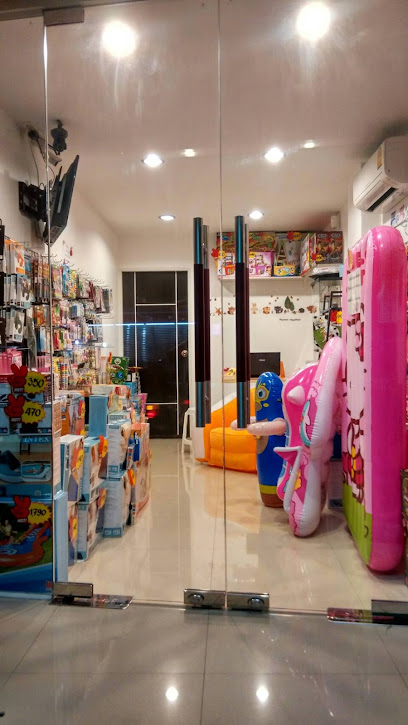
Essential bars & hidden hideouts
TEP BAR - Cultural Bar of Thailand
Experience the vibrant culture of Thailand at TEP BAR, where traditional flavors meet modern cocktail artistry in a captivating Bangkok setting.
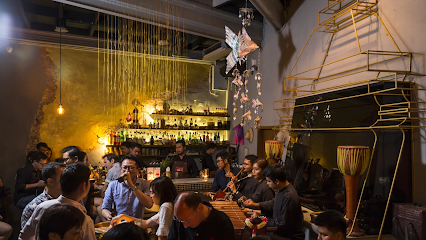
Ba hao 八號
Discover the vibrant fusion of bar culture and authentic Chinese cuisine at Ba hao 八號 in the heart of Bangkok.
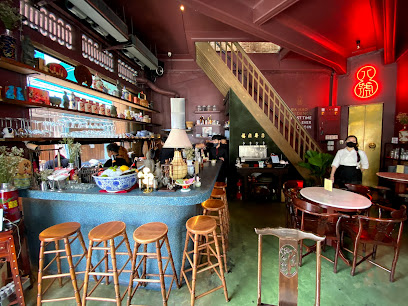
Tai Soon Bar
Experience the vibrant nightlife of Bangkok at Tai Soon Bar, where tradition meets modernity in a welcoming atmosphere.
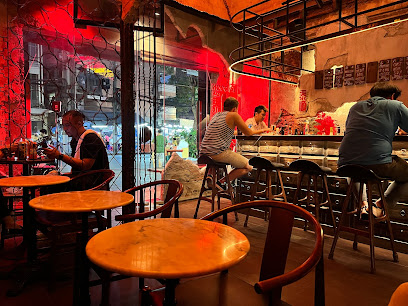
Teens of Thailand
Experience Bangkok's nightlife at Teens of Thailand, a vibrant cocktail bar offering innovative drinks and a lively atmosphere.
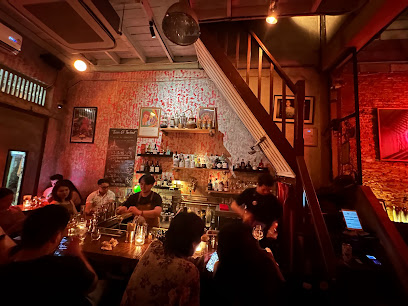
To More
Experience Bangkok's nightlife at To More, a chic cocktail bar in Talat Noi offering handcrafted drinks and a vibrant atmosphere.
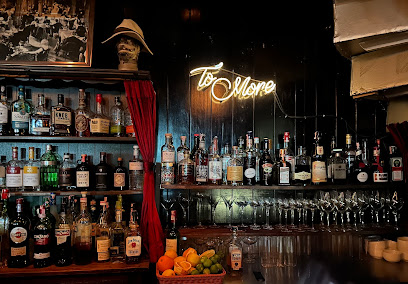
Glass Half Full Bar
Discover the vibrant nightlife at Glass Half Full Bar in Bangkok's Chinatown, where innovative cocktails and a lively atmosphere await every visitor.
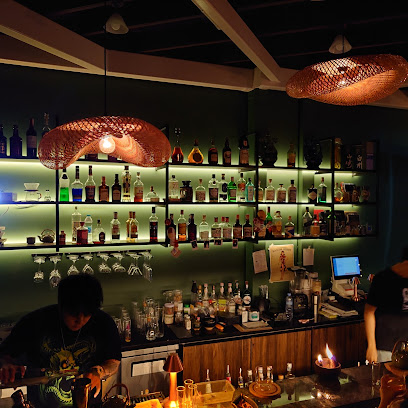
Opium Bar
Experience the vibrant nightlife of Bangkok at Opium Bar, where exquisite cocktails and an inviting atmosphere create unforgettable memories.
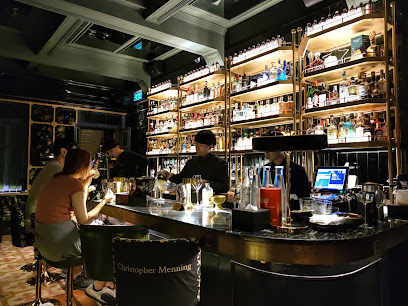
Magpie The Fortune Bar China Town
Experience the vibrant nightlife at Magpie The Fortune Bar in Bangkok's Chinatown, offering stunning views and creative cocktails.
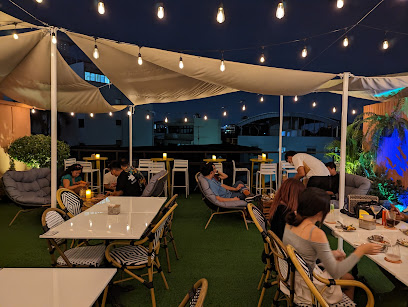
Ang Yi อั่งยี่
Unveil the charm of Ang Yi, a hidden bar in Bangkok's Chinatown, where creative cocktails and cozy ambiance await every visitor.

Widdershins
Discover Widdershins, a chic cocktail bar in Bangkok's Chinatown, where innovative drinks and a speakeasy atmosphere create an unforgettable nightlife experience.
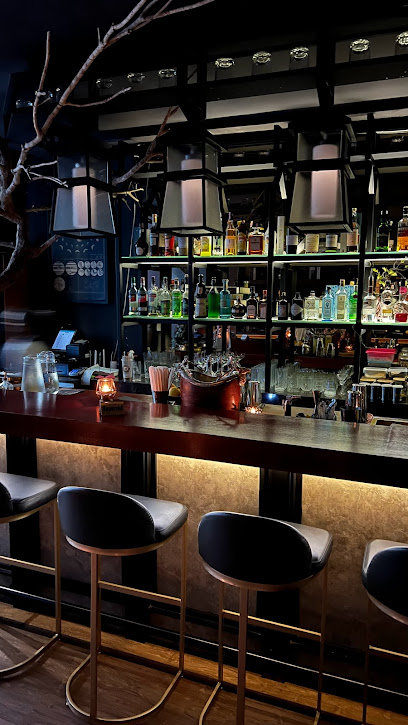
Local Phrases
-
- Helloสวัสดี
[sawadee] - Goodbyeลาก่อน
[la korn] - Yesใช่
[chai] - Noไม่
[mai] - Please/You're welcomeโปรด/ยินดีต้อนรับ
[prode/yindee ton rap] - Thank youขอบคุณ
[kop khun] - Excuse me/Sorryขอโทษ
[kor toht] - How are you?สบายดีไหม
[sabai di mai] - Fine. And you?สบายดีค่ะ และคุณ
[sabai di ka lae khun] - Do you speak English?คุณพูดภาษาอังกฤษได้ไหม
[khun poot phasa angkrit dai mai] - I don't understandฉันไม่เข้าใจ
[chan mai khao jai]
- Helloสวัสดี
-
- I'd like to see the menu, pleaseขอดูเมนูหน่อยค่ะ
[kor doo menu noi ka] - I don't eat meatฉันไม่กินเนื้อ
[chan mai gin neu] - Cheers!ชนแก้ว!
[chon kao] - I would like to pay, pleaseขอจ่ายเงินค่ะ
[kor jai ngeun ka]
- I'd like to see the menu, pleaseขอดูเมนูหน่อยค่ะ
-
- Help!ช่วยด้วย!
[chui doo-i] - Go away!ไปทางไหน!
[pai tang nai] - Call the Police!โทรตำรวจ!
[tor tam-ruad] - Call a doctor!โทรหมอ!
[tor mor] - I'm lostฉันหลงทาง
[chan long tang] - I'm illฉันไม่สบาย
[chan mai sabai]
- Help!ช่วยด้วย!
-
- I'd like to buy...ฉันอยากซื้อ...
[chan yahk seu] - I'm just lookingฉันเพียงแค่ดู
[chan piang kae doo] - How much is it?ราคาเท่าไหร่
[ra-ka thao rai] - That's too expensiveแพงเกินไป
[paeng keun pai] - Can you lower the price?ลดราคาได้ไหม
[lot ra-ka dai mai]
- I'd like to buy...ฉันอยากซื้อ...
-
- What time is it?ตอนนี้กี่โมง
[ton nee kee mong] - It's one o'clockเวลาหนึ่งโมง
[wela neung mong] - Half past (10)สามสิบครึ่ง
[sam sip krueng] - Morningเช้า
[chao] - Afternoonบ่าย
[bai] - Eveningเย็น
[yen] - Yesterdayเมื่อวาน
[meua wan] - Todayวันนี้
[wan nee] - Tomorrowพรุ่งนี้
[proong nee] - 1หนึ่ง
[neung] - 2สอง
[song] - 3สาม
[sam] - 4สี่
[si] - 5ห้า
[ha] - 6หก
[hok] - 7เจ็ด
[jet] - 8แปด
[paet] - 9เก้า
[gao] - 10สิบ
[sip]
- What time is it?ตอนนี้กี่โมง
-
- Where's a/the...?...อยู่ที่ไหน
[... yu tee nai] - What's the address?ที่อยู่คืออะไร
[tee yu keu arai] - Can you show me (on the map)?ช่วยแสดงให้ฉันดู(บนแผนที่)ได้ไหม
[chui sa-dang hai chan doo (bon paen tee) dai mai] - When's the next (bus)?รถเมล็ดต่อไปเวลาเท่าไหร่
[ro melot tor pai wela thao rai] - A ticket (to ....)บัตรโดยสาร(ไป...)
[bat doy saan (pai...)]
- Where's a/the...?...อยู่ที่ไหน
History of Chinatown
-
Bangkok's Chinatown, known as Yaowarat, was established in the late 18th century when King Rama I relocated the capital from Thonburi to present-day Bangkok. The influx of Chinese immigrants began during this time, particularly during the Qing Dynasty, as they sought opportunities in trade and commerce. This settlement grew rapidly, becoming a vibrant hub of Chinese culture and economic activity.
-
During the 19th century, Bangkok's Chinatown flourished due to the opium trade, which contributed significantly to the local economy. Chinese merchants played a crucial role in this trade, establishing businesses that catered to both local and foreign markets. As a result, Yaowarat became a bustling center of commerce and trade, attracting more Chinese immigrants looking to capitalize on the economic opportunities.
-
During World War II, Bangkok's Chinatown experienced significant upheaval under Japanese occupation. The Japanese authorities exploited the Chinese community for labor and resources, leading to heightened tensions between the Thai and Chinese populations. This period also saw the rise of anti-Chinese sentiment in Thailand, which impacted the community's social dynamics and economic activities.
-
After World War II, Bangkok's Chinatown underwent a period of reconstruction and revitalization. The 1950s and 1960s marked a resurgence of Chinese cultural identity, as many residents began to celebrate traditional festivals and customs openly. The area became known for its vibrant street life, characterized by markets, food stalls, and temples that reflect the rich Chinese heritage.
-
In recent years, Bangkok's Chinatown has faced challenges related to urbanization and gentrification. As property values rise, traditional businesses and homes are being replaced by modern developments. Despite these changes, Chinatown remains a vital cultural enclave, with efforts to preserve its historical charm and promote tourism that highlights its unique heritage and culinary offerings.
Chinatown Essentials
-
Chinatown, known as Yaowarat, is easily accessible from various parts of Bangkok. The most convenient way is to take the MRT (subway) to Hua Lamphong Station, which is about a 10-minute walk from the heart of Chinatown. Alternatively, you can take a taxi or a Grab ride from popular areas like Sukhumvit or Silom. Buses also service the area, with routes 25, 37, and 53 passing through Yaowarat. For a more scenic route, consider taking a boat on the Chao Phraya River and disembarking at the Ratchawong Pier, which is just a short walk from Chinatown.
-
Chinatown is best explored on foot, as many attractions are close together. However, for longer distances, tuk-tuks are a fun option and readily available. The area is also accessible by the MRT and bus services. If you prefer cycling, you can rent a bicycle, but be cautious of traffic. Note that streets can become crowded, especially during festivals and weekends, so plan your routes accordingly.
-
Chinatown is generally safe for tourists, but like any major city, it’s wise to stay vigilant. Avoid walking alone late at night, especially in poorly lit areas. Be cautious of pickpockets in crowded markets and public transport. While there are no specific neighborhoods with high crime rates targeting tourists, areas around the old markets can be busy, so keep your belongings secure.
-
In case of emergencies, call 191 for police assistance or 1669 for medical emergencies. It's advisable to have travel insurance that covers medical costs. Local hospitals like Hua Chiew Hospital and Bangkok Hospital can provide medical care, and pharmacies are widely available for minor issues. Always have local emergency numbers and the address of your accommodation handy.
-
Fashion: Do wear comfortable clothing suitable for the weather. Avoid excessively revealing outfits, particularly when visiting temples. Religion: Do show respect by dressing modestly and removing shoes before entering temples. Public Transport: Do offer your seat to the elderly and disabled. Don’t engage in loud conversations or eat on public transport. Greetings: Do greet with a polite 'Sawasdee' and a slight bow. Don’t touch someone’s head, as it is considered disrespectful. Eating & Drinking: Do try street food and accept local dishes with gratitude. Don’t waste food or refuse hospitality, as it may offend your host.
-
To experience Chinatown like a local, visit early in the morning when the markets are bustling with activity. Sample breakfast dishes such as rice soup or dim sum from local vendors. Engage with street food vendors for authentic flavors and recommendations. Don't miss the chance to explore hidden alleys where you can find unique shops and local crafts. If you're interested in Chinese culture, visit the Wat Mangkon Kamalawat temple, and learn about its significance in the local community.
Trending Landmarks in Chinatown
Nearby Cities to Chinatown
-
Things To Do in Samut Prakan
-
Things To Do in Ayutthaya
-
Things To Do in Pattaya
-
Things To Do in Kanchanaburi
-
Things To Do in Hua Hin
-
Things To Do in Rayong
-
Things To Do in Nakhon Ratchasima
-
Things To Do in Trat
-
Things To Do in Battambang
-
Things To Do in Koh Kong
-
Things To Do in Siem Reap
-
Things To Do in Sukhothai
-
Things To Do in Chumphon
-
Things To Do in Loei
-
Things To Do in Koh Rong











